The most EXTRAORDINARY new discoveries made about planet Earth
Awe-inspiring breakthroughs

Various
Our planet is full of mystery and wonder. There are so many things that scientists and researchers are only just discovering, from new species to secrets hidden deep within the oceans. In the last decade, we’ve unearthed Africa’s oldest known dinosaur, discovered the tombs of ancient pharaohs and even learned about the existence of terrifying blood-sucking wasps.
Read on to uncover astonishing recent discoveries that might just blow your mind...
The tomb of a long-missing pharaoh was discovered

Peter Horree/Alamy
In February 2025, excited archaeologists unveiled perhaps the most important ancient Egyptian discovery since the tomb of Tutankhamun was unearthed more than a century ago. They had uncovered the tomb of Thutmose II – the last undiscovered tomb of Egypt's 18th dynasty, which also included Tutankhamun. Cut into the rock, the tomb's blue-painted ceiling with yellow stars was an instant tell that it belonged to a king.
Thutmose II reigned roughly from 1493 to 1479 BC, and his mummified remains (possibly misidentified) have long lain in an Egyptian museum. But his tomb had never been located. "You dream of such things", said archaeologist Piers Litherland, who announced the find, "but like winning the lottery, you never believe it will happen to you".
The UK's largest-ever dinosaur footprint site

Caroline Wood/University of Oxford
Boasting roughly 200 huge footprints dating back 166 million years, a quarry in the English county of Oxfordshire might just be the site of the largest dinosaur trackway ever found in the UK. Spotted in 2024 by a digger driver at Dewars Farm Quarry, experts quickly swooped in and have now identified the imprints of a Cetiosaurus – a long-necked sauropod similar to the Diplodocus – and a carnivorous Megalosaurus.
Unveiled in early 2025, the footprints can tell scientists how these dinosaurs walked, how far and with whom.
A PhD student accidentally discovered a giant lost city

Guillaume Angleraud/Shutterstock
Tulane University PhD student Luke Auld-Thomas was processing a survey of the Mexican jungle conducted by Lidar (a technology that uses lasers to map underground structures) when he noticed something extraordinary hiding in plain sight. Deep beneath the canopy, he spotted a sprawling Maya city, complete with sports fields, pyramids and amphitheatres.
Experts have dated the complex – now named Valeriana – to between AD 750 and 850, and estimated that it would once have housed between 30,000 and 50,000 people. This photo shows the nearby (and above ground) Maya city of Calakmul.
Scientists mapped a fly's brain for the first time

skynetphoto/Shutterstock
The brain of a fruit fly is smaller than a pinhead, but it still took scientists around 10 years to map the position, shape and connections of every single one of its 130,000 cells and 50 million connections. Unveiled in October 2024, the resulting analysis is the most detailed picture of an adult animal's brain ever produced, and researchers hope it will yield new insight into "the mechanism of thought". Flies are not nature's greatest thinkers, but they can walk, hover and sing songs to attract mates.
The hidden river that built the Pyramids

Edwin Remsberg/Alamy
The mystery of the Pyramids, or – more specifically – how exactly the Egyptians moved the massive stone blocks to build them, might finally have been solved. In May 2024, scientists revealed they’d discovered a long-buried branch of the Nile and, in doing so, potentially unearthed a truth about the construction of these world-famous landmarks.
The 40-mile-long (64km) branch, buried beneath the sand for millennia, was discovered using radar satellite imagery. Its discovery may explain why 31 pyramids were built in a chain along a now-inhospitable strip of desert roughly 4,000 years ago.
An elephant never forgets (their own name)
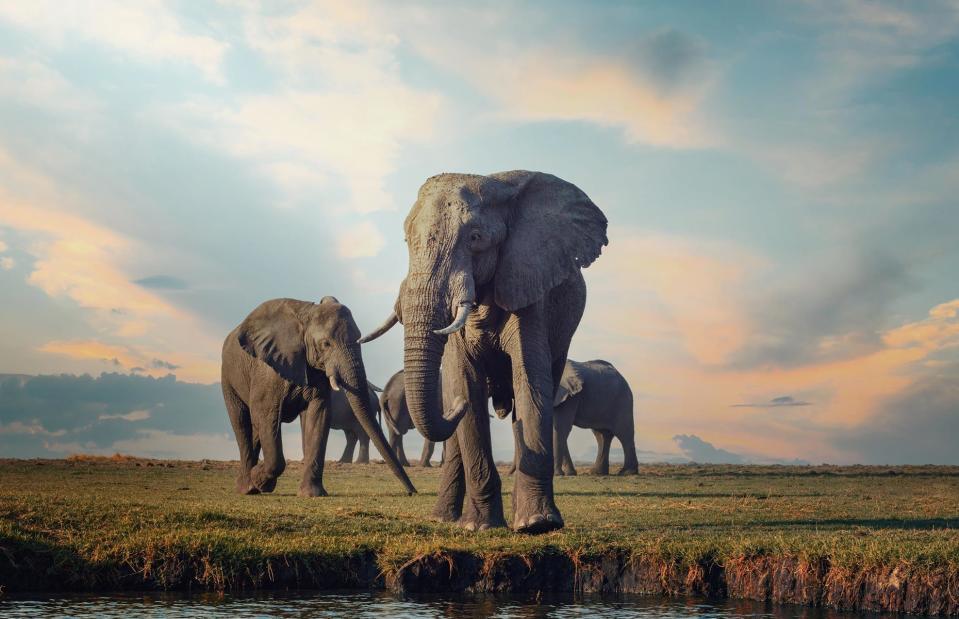
uliasomay/Shutterstock
By using an artificial intelligence algorithm, international researchers from Colorado State University, Save the Elephants and ElephantVoices (who had been studying two African savannah herds in Kenya), have determined that elephants call out to each other with distinct names. The researchers worked their way through elephant sounds recorded at Samburu National Reserve and Amboseli National Park between 1986 and 2022, ultimately concluding that the animal will react to sounds addressed to them while ignoring calls aimed at others.
Biodiverse 'islands' in the sky
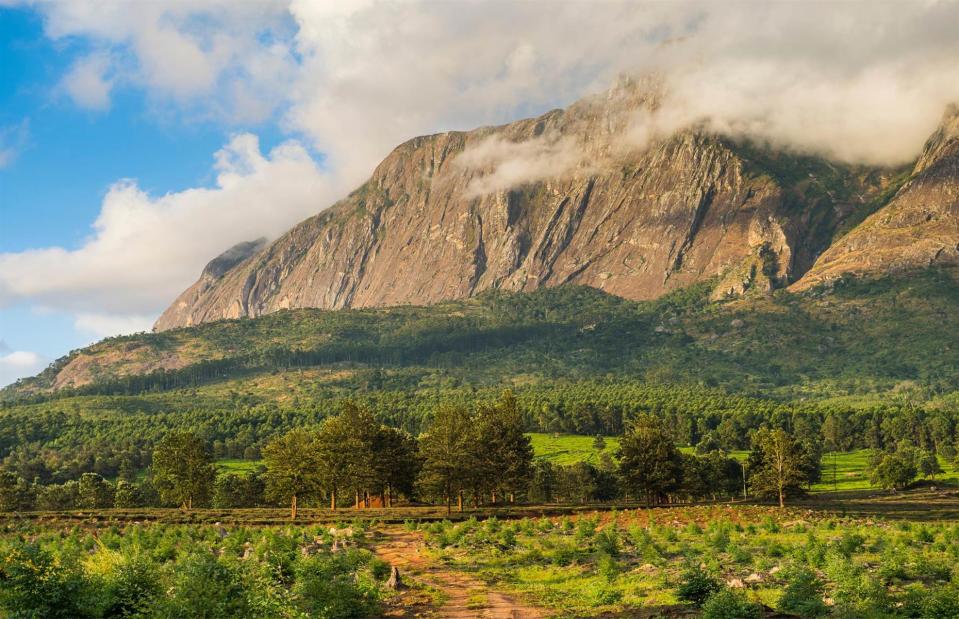
robertharding/Alamy
In the first half of 2024, it was revealed that a treasure trove of biodiversity had been discovered in the mountains that run between northern Mozambique and Malawi’s Mount Mulanje (pictured). Dubbed the South East Africa Montane Archipelago (SEAMA) by international scientists, the elevated grasslands and forests of these ‘sky islands’ – cut off from the outside world – have become the perfect setting for unique wildlife to thrive. The region, which faces some of Africa’s highest deforestation rates, is home to over 200 species that aren't found anywhere else.
100 new species in the deep
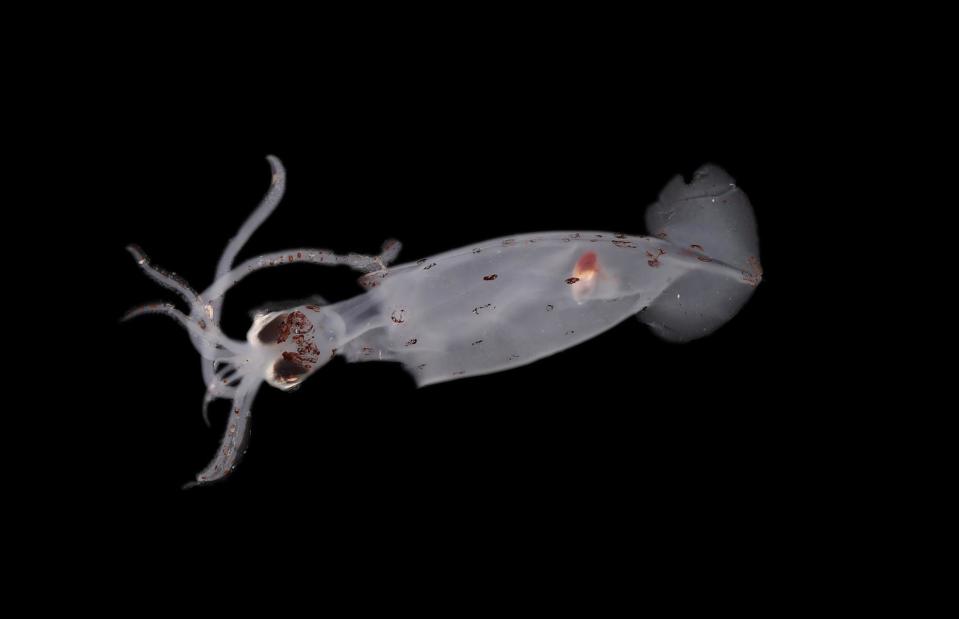
Ocean Census/NIWA
In March 2024, it was revealed that a team of scientists had potentially discovered 100 new marine species while exploring the ocean off the New Zealand coast. The Ocean Census expedition, made up of 21 experts, had been busy mapping and investigating the previously unexplored Bounty Trough east of the country’s South Island.
Heading to depths of three miles (4.8km), the team collected almost 1,800 samples for their research. Spotted in February 2024, this alien-like deep-sea squid (pictured) is one of the creatures thought to be new to science.
Mysteries of the world's deepest blue hole
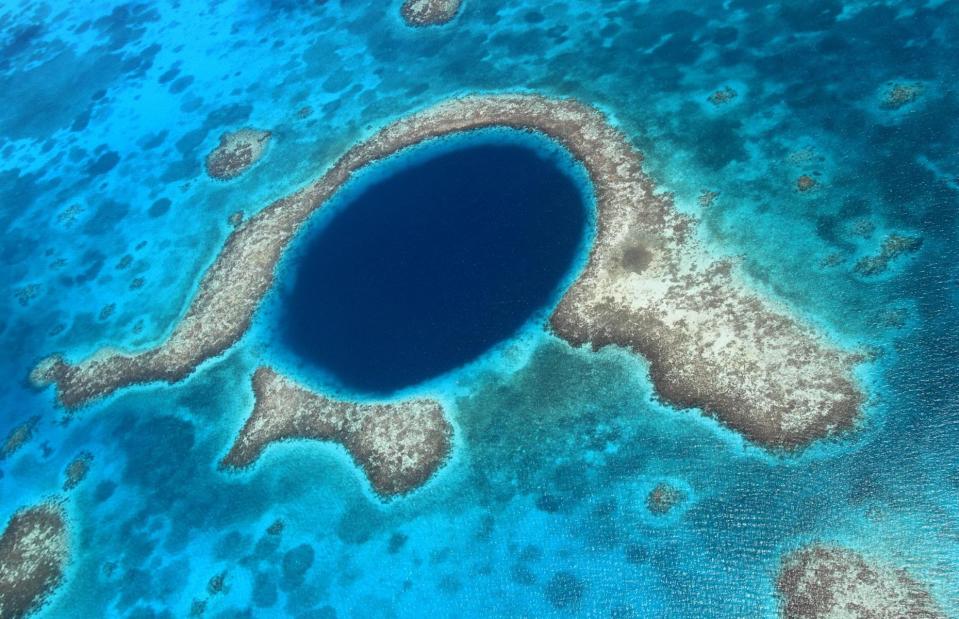
Ian Bottle/Alamy
Located in Chetumal Bay, just off the coast of Mexico, Taam Ja’ is now officially the world’s deepest underwater blue hole. Measuring at least 1,380 feet (420m) below sea level, scientists still don’t know exactly where the bottom of the sinkhole is, but they do now believe it to be part of a huge network of underwater caves and tunnels. Situated off the coast of Belize, the Great Blue Hole (pictured) is part of a UNESCO World Heritage Site.
Virus discovered in the Mariana Trench
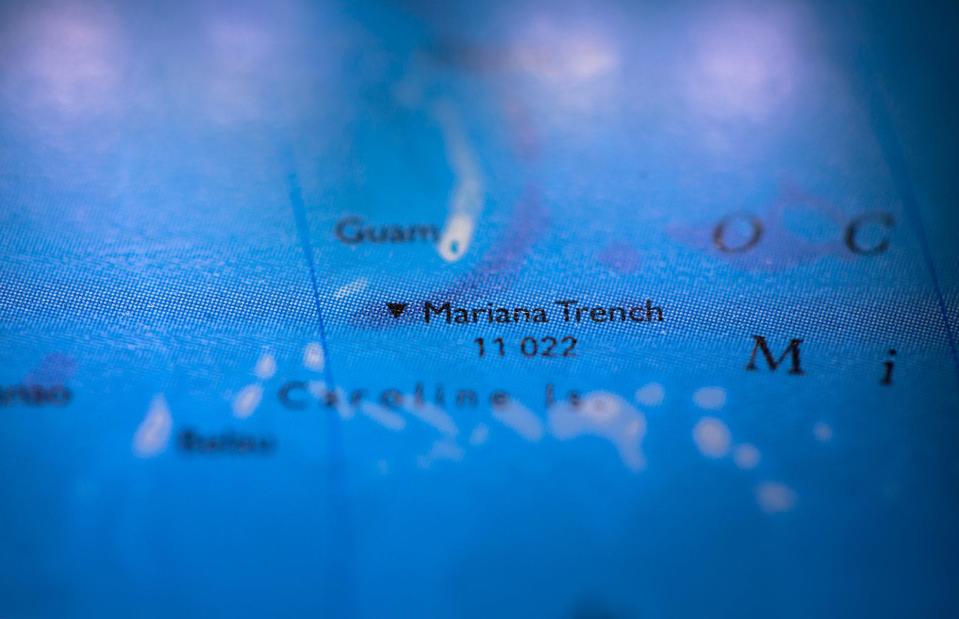
jefferyhamstock/Shutterstock
At the end of December 2023, it was revealed that researchers had dredged up sediment from the Mariana Trench and isolated a new virus. The catchy name they gave it was vB_HmeY_H4907. Discovered almost 30,000 feet (9,100m) beneath sea level, it is the deepest a virus has ever been discovered. At such extreme depths, the virus and anything it infects must be able to withstand brutally cold temperatures, no sunlight, a lack of nutrients and unimaginable pressure from the water above.
A terrifying new wasp species was discovered
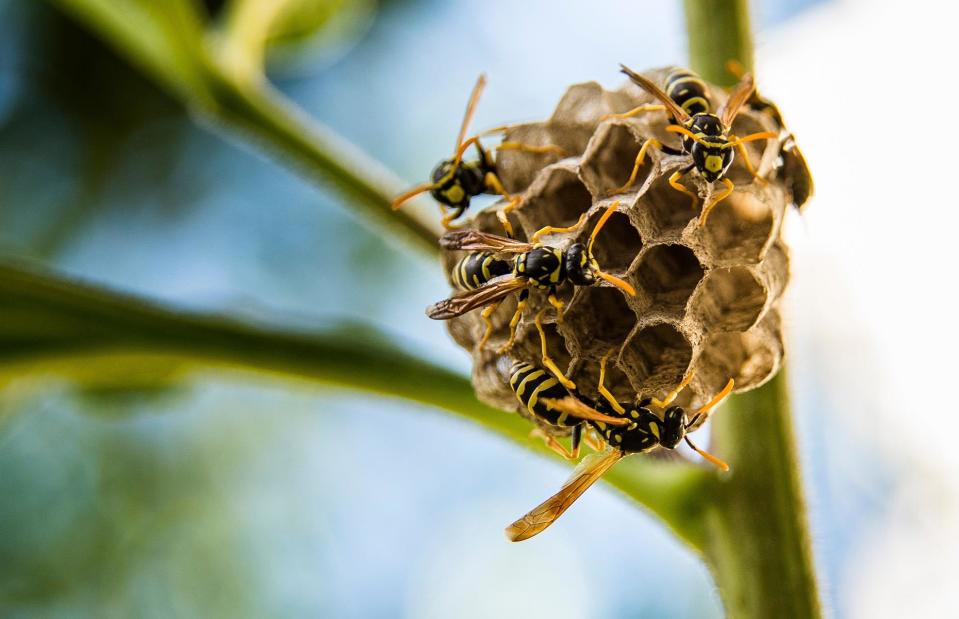
alekampo/Shutterstock
Perhaps the world might have been better off without knowing about the existence of so-called 'vampire wasps' – but that's exactly what was uncovered by experts in 2023. They were discovered as part of extensive scientific studies in the Peruvian Amazon and are so named for their macabre habit of sucking blood and killing their prey from the inside out by depositing their larvae into host species. Spooky stuff.
Scientists found an ancient landscape beneath the East Antarctic Ice Sheet

ICECAP
The sprawling East Antarctic Ice Sheet has kept a secret ancient landscape hidden for eons, according to scientists from two UK universities – Newcastle and Durham. They used satellites and advanced radio-echo-sounding techniques to reveal the forgotten landscape's valleys and ridges, which were apparently sculpted by rivers some 14 million years ago. The findings give us clues to how the icy landscape has changed over time, and thus might allow experts to draw conclusions about its future responses to our changing climate.
Jupiter has the most moons of any planet in the solar system
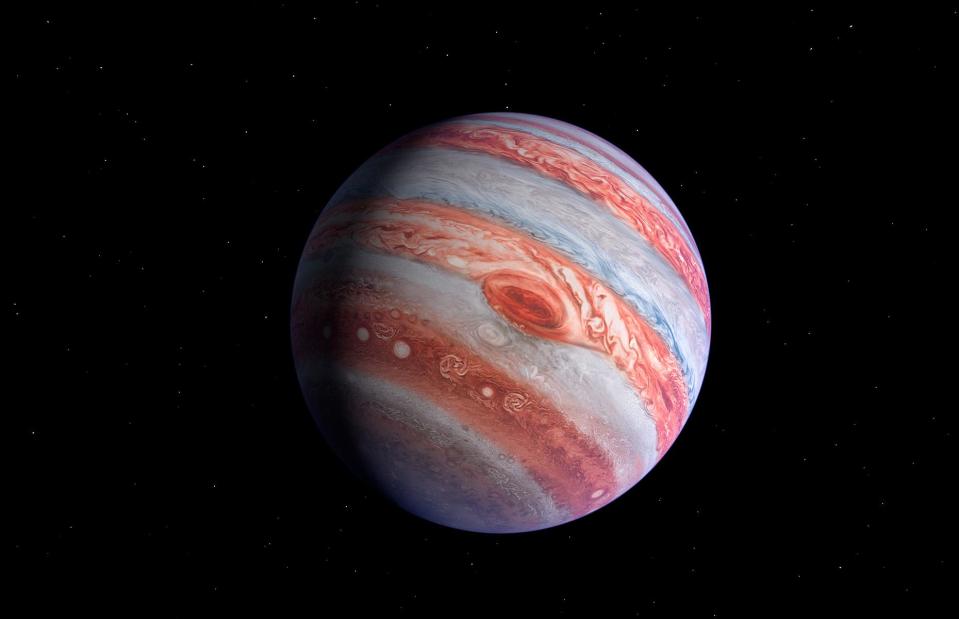
joshimerbin/Shutterstock
Up until 2023, it was thought that Saturn – with its 83 confirmed moons – was the planet in the solar system with the most moons. However, landmark research uncovered a whopping 12 new moons orbiting Jupiter – the largest planet in the solar system – bringing its overall total to 92. Interestingly, the moons orbit the planet in retrograde; this means they travel in the opposite direction to Jupiter's rotation.
New findings suggest humans might not have originated in Africa

Sevim-Erol, A., Begun, D.R., Sozer, Ç.S. et al
It's long been accepted that human origins can be traced back to the African continent – but a new revelation could have changed the minds of scientists. The 2023 discovery of an ancient ape's skull in the city of Cankiri (pictured), northeast of Ankara in Turkey, has possibly turned theories about evolution on their head. The remains date back some 8.7 million years – compared with those from Africa which are about seven million years old.
Archaeologists may have found Europe’s oldest village
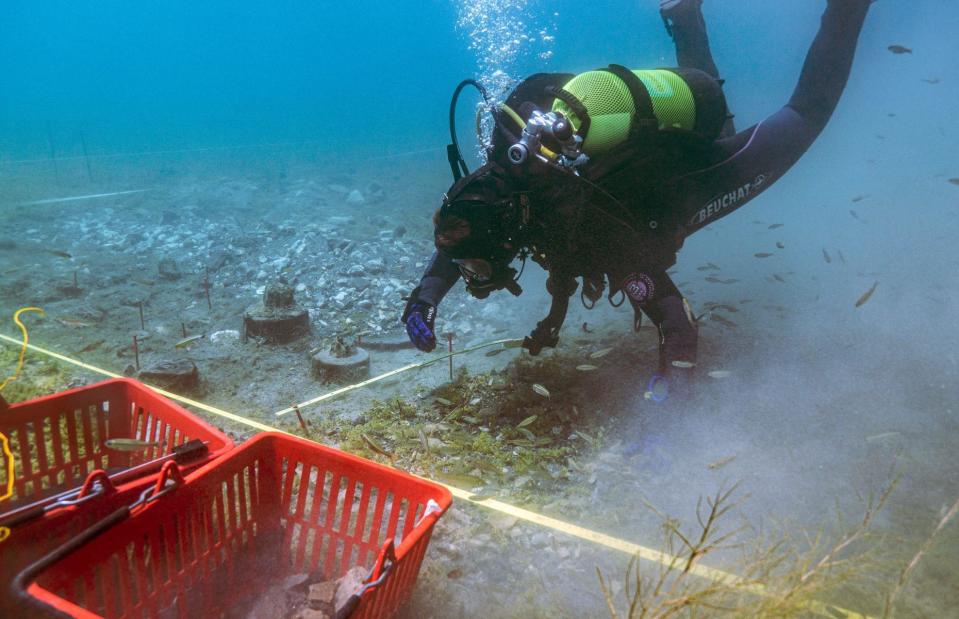
Marco Hostettler/Courtesy of Universitat Bern
Archaeologists may have discovered the earliest village in Europe submerged beneath vast Lake Ohrid, while excavating a site near Lin in Albania. The 2023 discovery comprises hundreds of stilts, which are thought to provide evidence of an 8,000-year-old village, now mouldering beneath the waters. Experts are currently working to carbon date these historic foundations to confirm their findings.
New giant spider species discovered
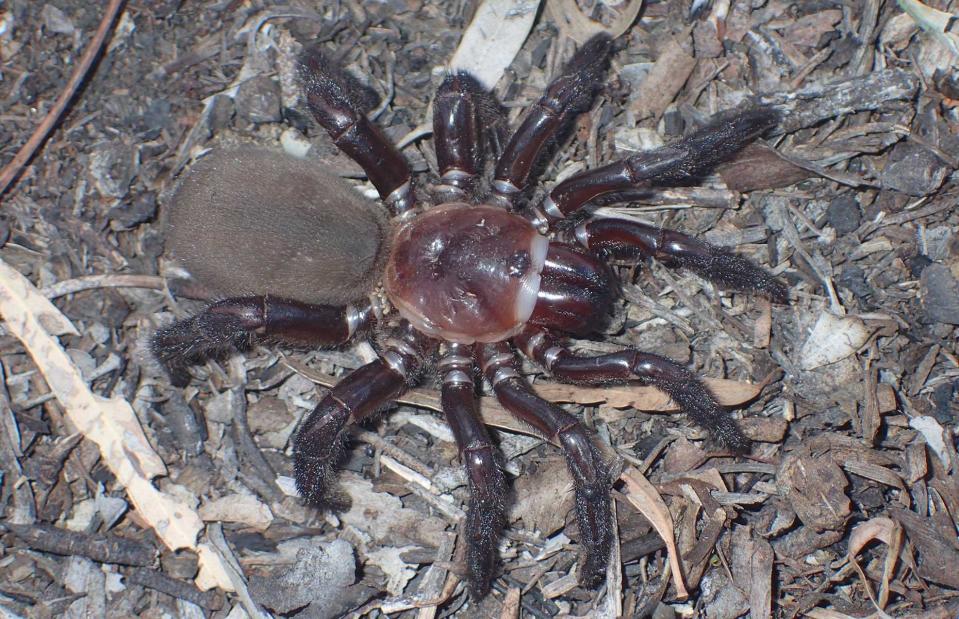
Queensland Museum
In 2023, a new giant species of golden trapdoor spider was discovered hiding away in the forests of central Queensland, Australia. The name of the spider, Euoplos dignitas, meaning dignity or greatness in Latin, reflects its size. Females, which are larger than the males, can grow up to two inches (5cm) in body length.
The rare spider, which can live up to 20 years and inject (non-deadly) venom from its fangs, can only be found in the Brigalow Belt in Central Queensland. As the woodland has been affected by human development and land clearing over the last 150 years, sadly this new spider species is already endangered.
Scientists finally explained Namibia’s Fairy Circles
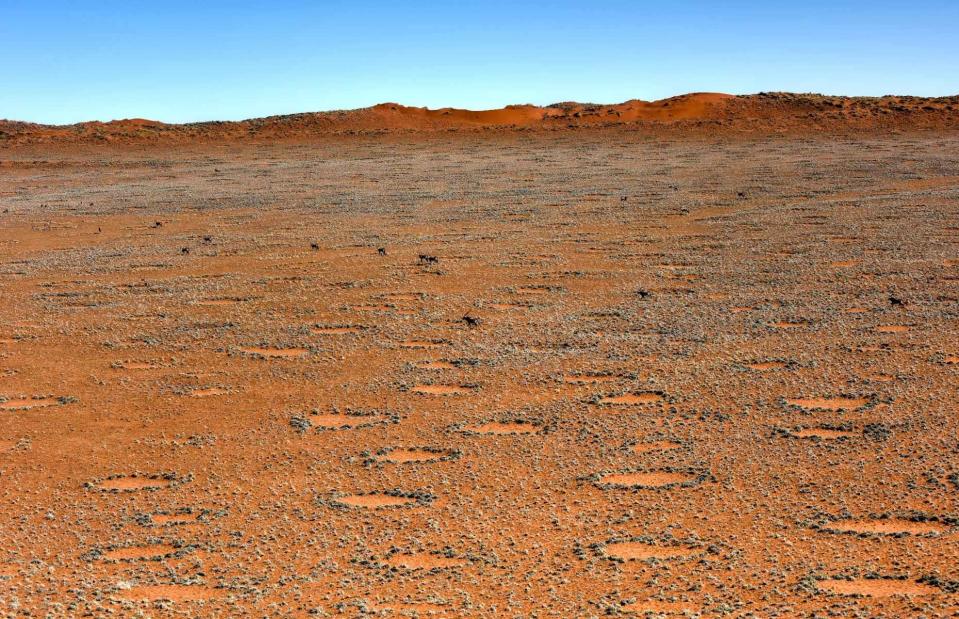
Felix Lipov/Shutterstock
These strange gaps in the grassland, which number in their millions and are found in the heart of the Namib Desert, have puzzled experts for decades. But new research has finally answered the question of how they’re formed. According to scientists at Germany's University of Göttingen, the grasses outside the circles suck up water from within the circles, causing the grasses inside to die. The research finally solves the mystery of the bizarre phenomena, which were previously thought to have been created by termites.
Nefertiti's mummified remains may have been unearthed
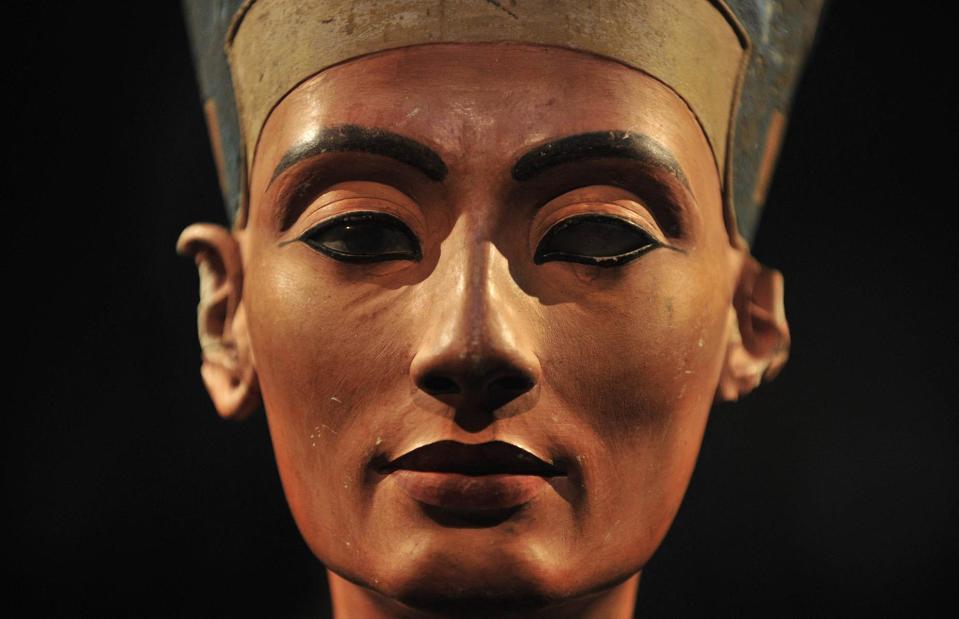
JOHN MACDOUGALL/AFP/Getty Images
Queen Nefertiti is an icon of ancient Egypt, and one archaeologist claims to have discovered her mummy. Lasting several years, an extensive dig took place in Luxor’s Valley of the Kings starting in 2017, and in 2022 leading Egyptologist Zahi Hawass said he believes that some of the uncovered mummified remains are that of the late royal. Nefertiti’s identity is yet to be verified, so watch this space. Pictured here is a famous bust of Nefertiti, housed in Berlin's Neues Museum.
The last ever thylacine was found in a museum vault
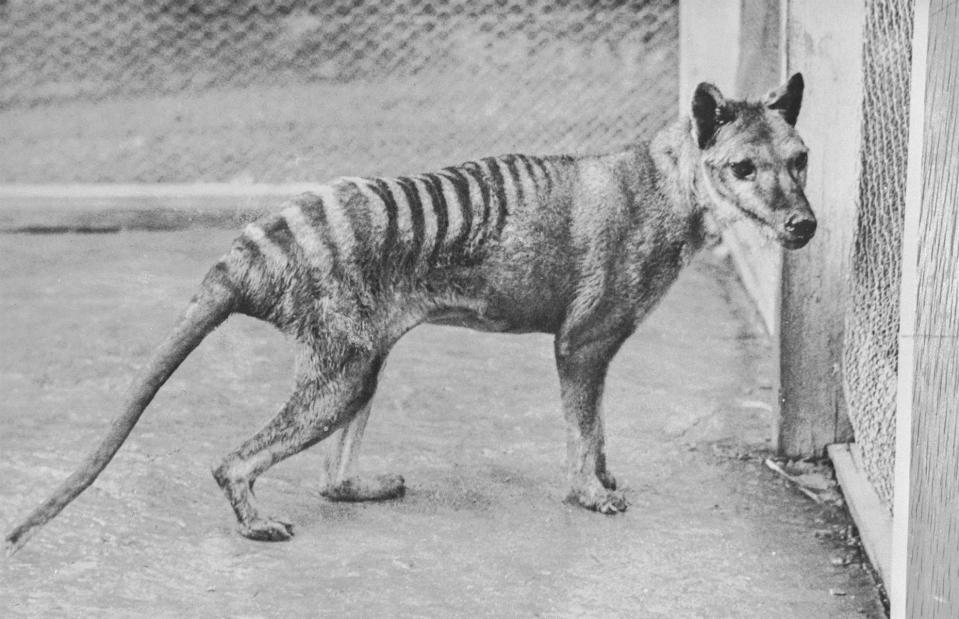
Hum Historical/Alamy
Benjamin the thylacine, more commonly known as the Tasmanian tiger, died of exposure in Hobart's Beaumaris Zoo in 1936, just 59 days after the species was granted far-too-late legal protection. A wolfish marsupial with tiger-like stripes, the thylacine was wiped out by hunting, habitat loss and disease, and the remains of the last living creature were long thought lost. After decades of unsuccessful searching, the animal's pelt and skeleton miraculously reappeared in a Tasmanian Museum and Art Gallery vault in December 2022, their absence apparently the result of an administrative error.
There’s a river longer than the Thames under Antarctica

AlexUm5/Shutterstock
Back in November 2022, scientists announced the discovery of a 285-mile (460km) river beneath the Antarctic ice sheet – that’s longer than London’s River Thames. The river was found using a series of aerial surveys, in which an ice-penetrating radar was mounted onto an aircraft to map the landscape from above. It’s thought that the river might accelerate ice loss as the moving water can eat away at the ice sheet from below.
We discovered a rainbow fish that’s born female and turns male
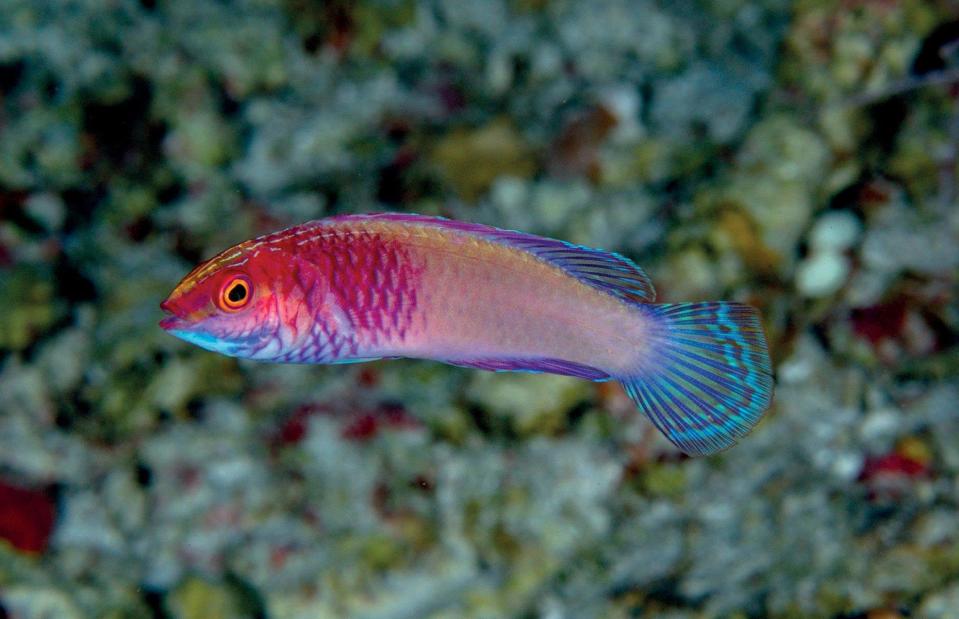
AR Emery and R Winterbottom/Wikimedia Commons/CC0
One of the most striking species discovered in 2022 was this beautiful rainbow-coloured fish, Cirrhilabrus finifenmaa. The Maldivian species, known as the rose-veiled fairy wrasse, was found in the Indian Ocean's mesophotic zone, which is between 131 and 230 feet (40-70m) underwater. Like other species of wrasse, it changes in both sex and appearance as it gets older; shifting from female to male and becoming more brightly coloured (in order to attract a mate).
New research sheds light on the world’s earliest animals
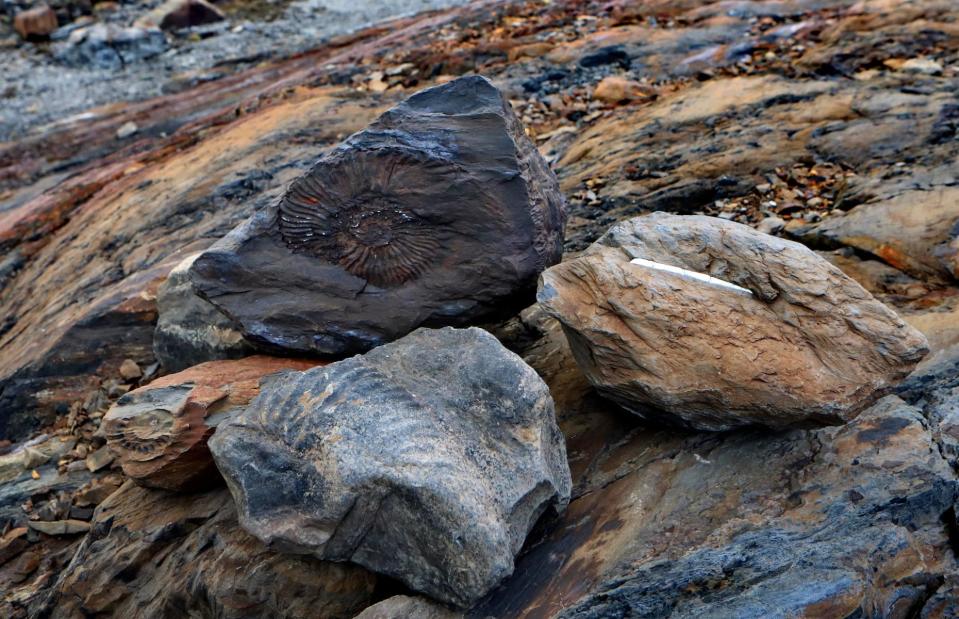
David Silverman/Getty Images
In October 2022, a study published in the journal Global Change Biology revealed that the first animals on Earth may have evolved earlier than even our oldest fossils suggest. The current fossil record indicates that animal life originated on Earth between 572 and 602 million years ago, after a huge ice age.
However, this research (conducted using molecular biology) suggests that animal life could date back up to 850 million years. If correct, the research suggests animals could have lived in extreme glacial periods and when the planet was covered in ice.
We found out more about the effects of the dinosaur-killing asteroid

Iren Key/Shutterstock
Some 66 million years ago, a huge asteroid hit Earth and wiped out almost all the dinosaurs. But a recent study has confirmed that the event – with its impact site on Mexico's Yucatan Peninsula (pictured) – also triggered a colossal tsunami with mile-high waves that radiated outwards for thousands of miles. The study presented the first-ever computer simulation of the Chicxulub tsunami, which was said to be strong enough to disturb undersea sediments halfway across the world.
We discovered Africa’s oldest known dinosaur
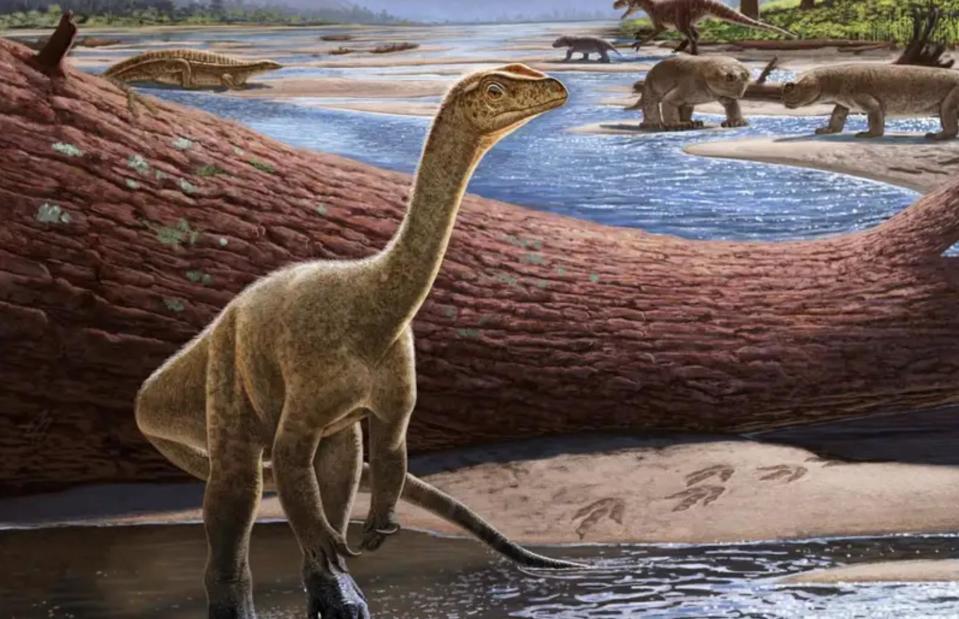
Courtesy Andrey Atuchin
In September 2022, scientists named the oldest known dinosaur to have been discovered in Africa. The skeleton of the newly-named Mbiresaurus raathi, which was strikingly intact, was found in the Zambezi Valley of Zimbabwe over the course of two digs in 2017 and 2019. The early dinosaur roamed the Earth some 230 million years ago and was a type of sauropod – a subgroup that could weigh up to 120 tonnes.
A new species of maned sloth was found
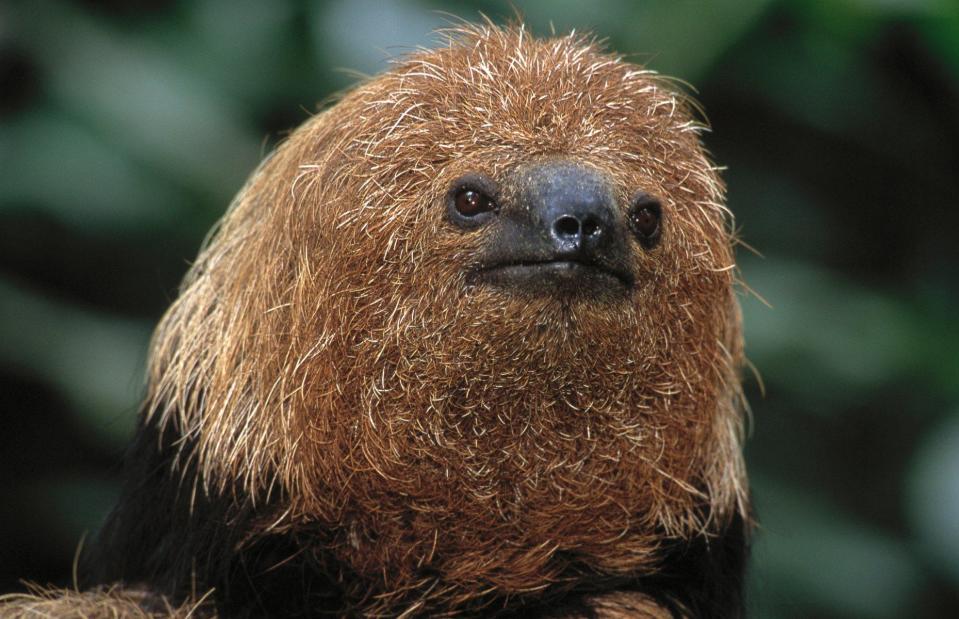
Avalon.red/Alamy
While most of the new species discovered each year are invertebrates, fish and plants, scientists occasionally reveal a new type of mammal. In September 2022, researchers announced the naming of a new species of sloth, the southern maned sloth (Bradypus crinitus), which lives in the Brazilian Atlantic Forest and has a head like a coconut. Previously, only one species of maned sloth was thought to exist; genetic and physical analyses, however, revealed that there are actually two.
An early gibbon fossil fills an evolutionary gap
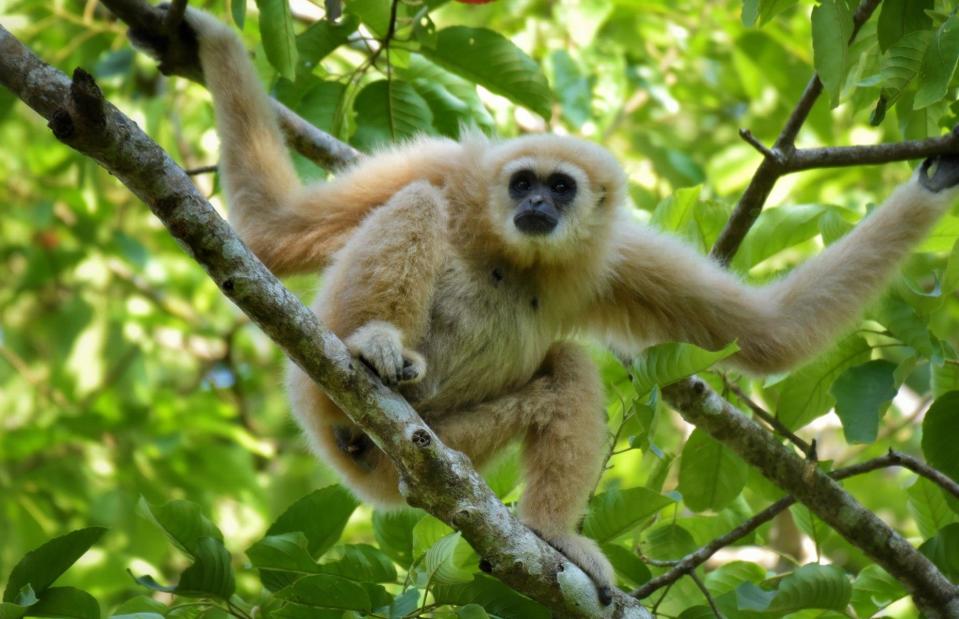
Plutonian p/Shutterstock
In China’s Yunnan Province, scientists discovered the remains of an early gibbon, which fills a massive gap in the fossil record and could unlock knowledge about the evolution of apes (and therefore, humanity). As reported in a study published in September 2022, fossils of the hylobatid family of apes are extremely rare, and the only ones previously discovered dated back just two to three million years. This new specimen was around seven to eight million years old.
We found a fossil of an underwater dinosaur in Morocco
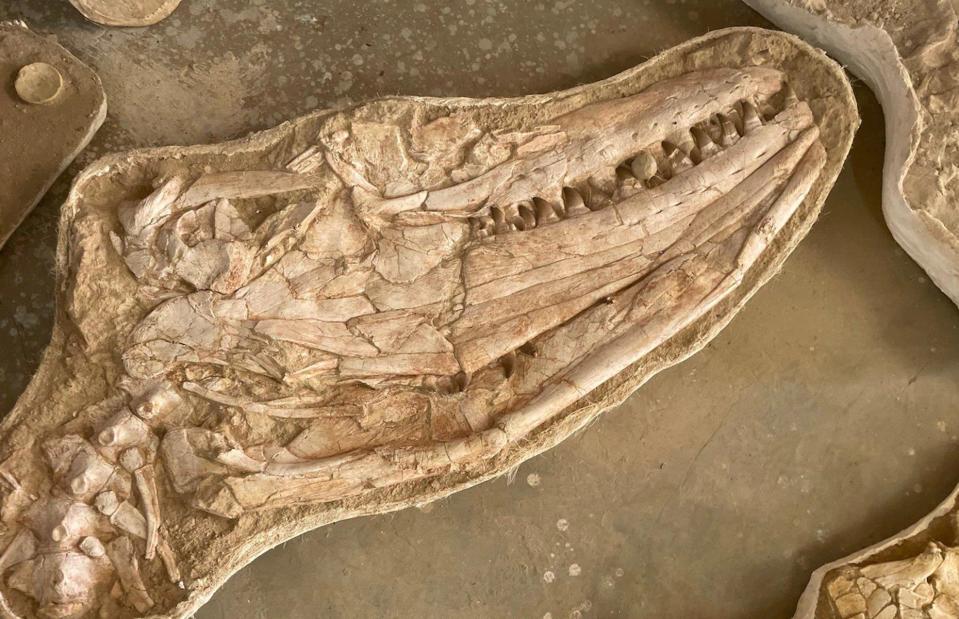
Courtesy University of Bath
In August 2022, scientists in Morocco discovered a terrifying fossil that offers a window into what once swam at the bottom of our oceans. Described as a cross between a Komodo dragon, a great white shark, a killer whale and a T-rex, the fossil was named Thalassotitan atrox, which means 'dreadful titan of the sea'. The ancient sea creature lived around 66 million years ago and measured 40 feet (12m) in length.
The team that found the fossil believe that the creature spat out its prey’s bones, some of which might still lie fossilised nearby.
Dinosaur footprints were found after drought in Texas
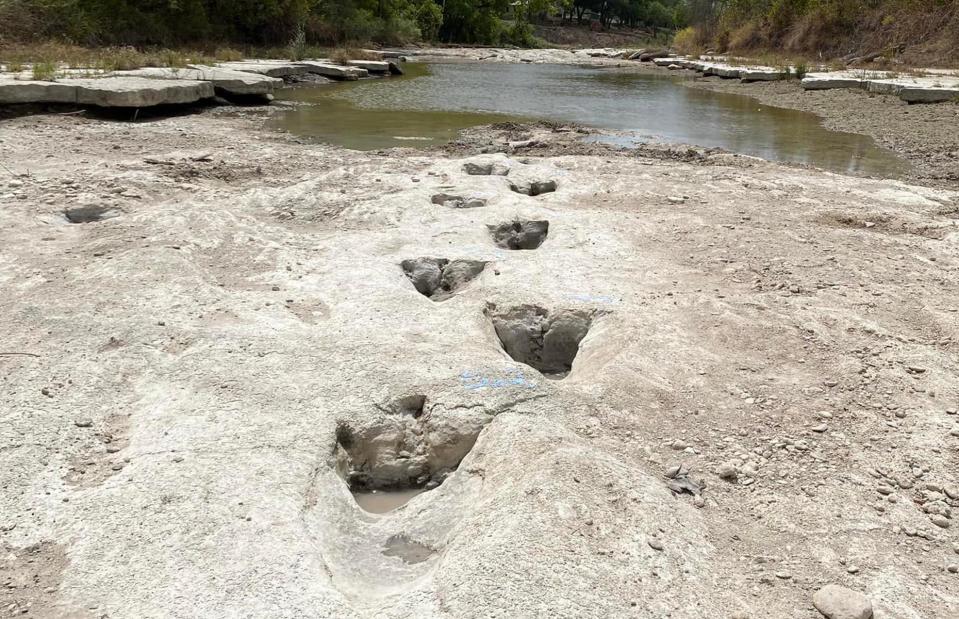
Paul Baker/Friends of Dinosaur Valley
Ultra-dry conditions revealed huge dinosaur tracks in a muddy riverbed at Dinosaur Valley State Park in Texas in August 2022 – one of many finds brought about by droughts in 2021. Said to belong to an Acrocanthosaurus, a 15-foot-tall (5m), seven-tonne early cousin of the T-rex, the tracks are around 113 million years old.
Another species, the Sauroposeidon, measuring 66 feet (20m) tall and weighing a whopping 44 tonnes, is also likely to be responsible for some of the prints. Although the park is famed for its dinosaur tracks, this was the first time these particular footprints had been seen.
The world’s largest water lily was discovered in the UK

Leon Neal/Getty Images
The Royal Botanic Gardens at Kew in London are at the forefront of horticultural research, with dozens of new plant species discovered here every year. In July 2022, though, scientists announced a particularly exciting find.
It was an enormous species of water lily called Victoria boliviana. The species is thought to be the largest in the world, with leaves up to 10 feet (3.2m) in diameter. Native to Bolivia, the gargantuan plant shown in this image was grown in the Gardens’ Waterlily House from seeds donated by Bolivian scientists.
We identified an active volcano on Venus

StudioFI/Shutterstock
Data made possible by NASA’s Magellan spacecraft has revealed an active volcano on the surface of Venus, a planet previously thought to be geologically lifeless. Images showed how the volcano suddenly collapsed, causing the size of its caldera to grow considerably. Experts say that this geological activity proves that Venus is not a dying planet and that the eruption will have revealed new rock that will help scientists study its interior.
The 'Rosetta Stone of marine palaeontology' was discovered in Australia
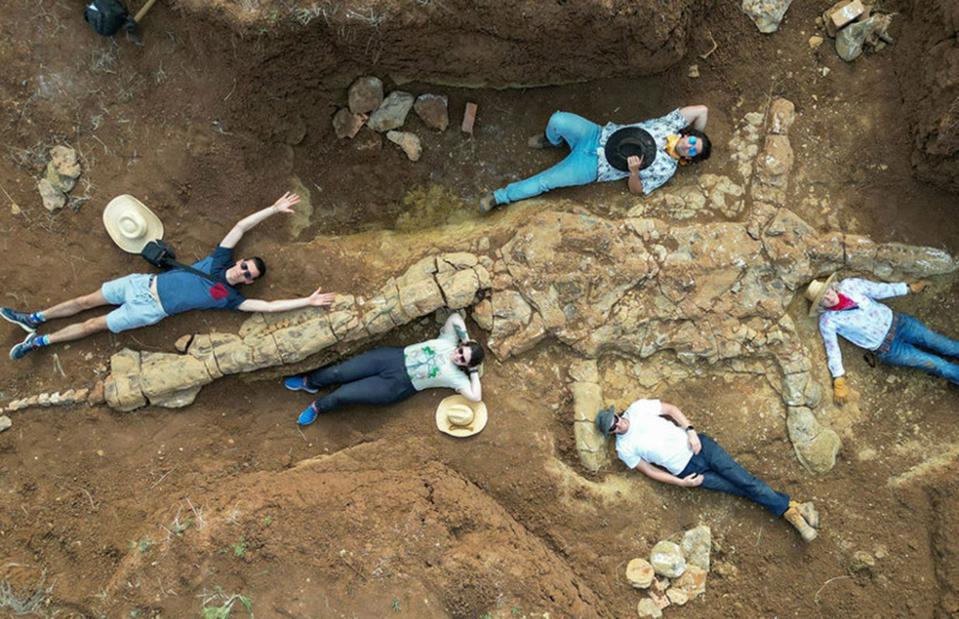
Queensland Museum Network
Experts that recently exhumed the remains of a 100-million-year-old reptile have described their findings as the 'Rosetta Stone of marine palaeontology'. In a world first, both the head and associated body of the long-necked plesiosaur (a kind of extinct marine reptile that coexisted with dinosaurs) were uncovered in a remote region of Western Queensland in 2022. Experts say that the discovery could be key to unlocking valuable information about Australia's Cretaceous period.
This volcano had the highest recorded plume
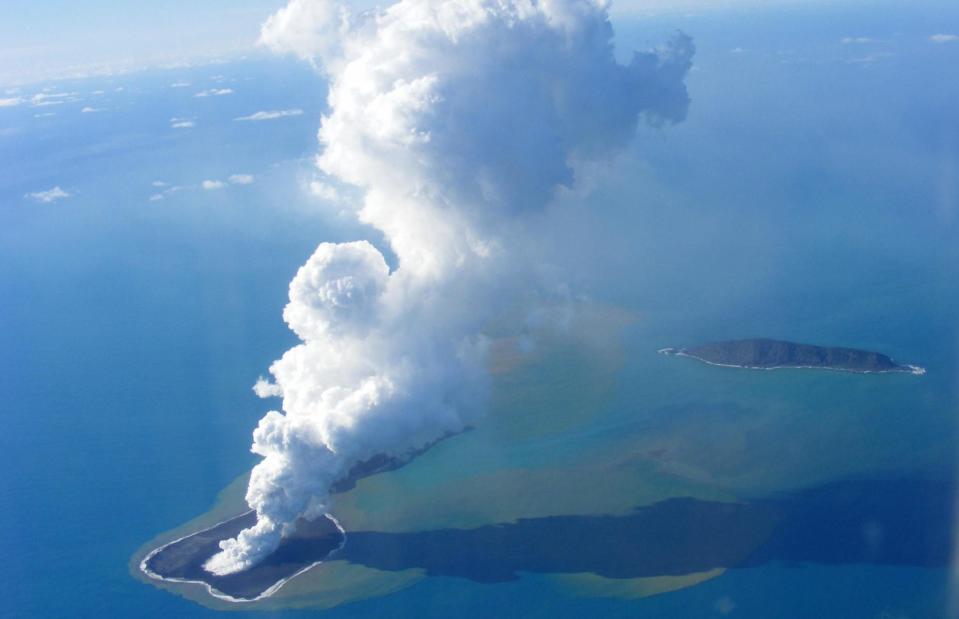
AFP PHOTO/Telusa Fotu/MATANGI TONGA
In January 2022, the Hunga Tonga-Hunga Haʻapai volcano in the Pacific Ocean exploded and released an enormous column of water and ash. Months later, studies revealed that the explosion was the largest ever recorded – in fact, it was the only eruption ever known to have broken through the mesosphere (penultimate) layer of the atmosphere. Sadly, the spewing volcanic eruption had devastating impacts back here on Earth, and triggered vast tsunamis that displaced thousands of people.
A 30,000-year-old woolly mammoth was unearthed in Canada

The Natural History Museum/Alamy
Another recent scientific discovery with far-reaching implications was this strikingly well-preserved baby woolly mammoth. It dates all the way back to the last Ice Age, and when it was first uncovered in deep permafrost in the Yukon’s Trʼondek Hwechʼin Traditional Territory, Canada, researchers were stunned. Its perfectly preserved skin, trunk, toenails and hair made it the best woolly mammoth specimen ever found in North America.
Insects produce as much electricity as thunder clouds

Viesinsh/Shutterstock
One of the stranger pieces of scientific research carried out in the last few years was this study on honeybees. Conducted by researchers at the University of Bristol, the study measured electrical fields near swarms of honeybees and found that the insects were capable of producing as much electrical charge as thunder clouds. The findings are unique in demonstrating that living organisms can have an impact on atmospheric electricity.
The world’s largest seagrass forest was found – by sharks
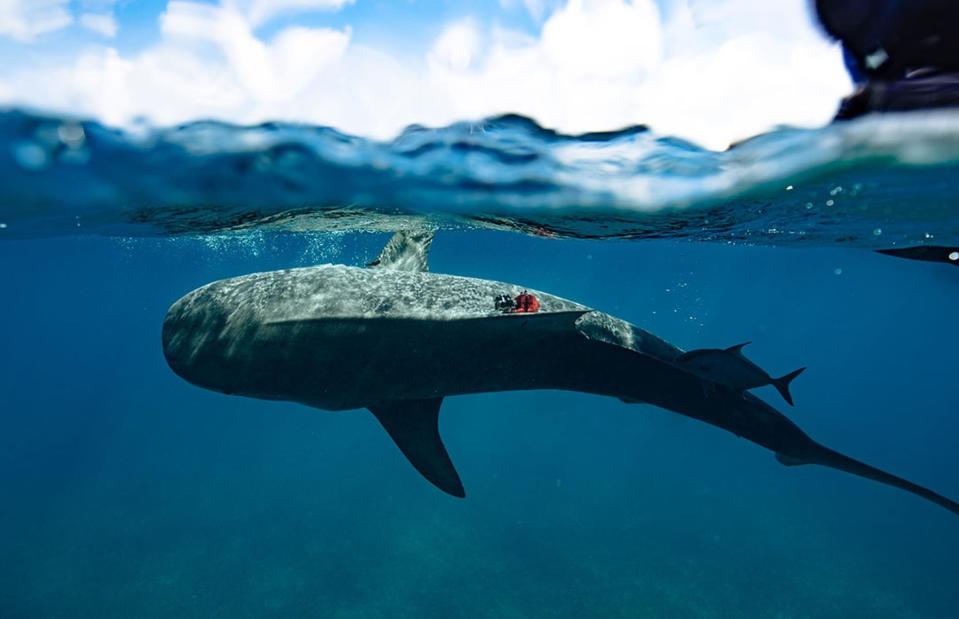
Diego Camejo/Beneath the Waves
Scientists recently found an enormous seagrass forest with the help of some unlikely participants: sharks. The research, which was carried out in the sea surrounding the Bahamas, involved strapping cameras onto tiger sharks and getting them to film the ocean floor. This allowed scientists to collect vital data, and proved that a forest stretching 35,000 square miles (92,000sq km) covers the Caribbean seabed – the largest seagrass forest currently known to exist.
NASA discovered a new 'super Earth' 10 times the size of our planet
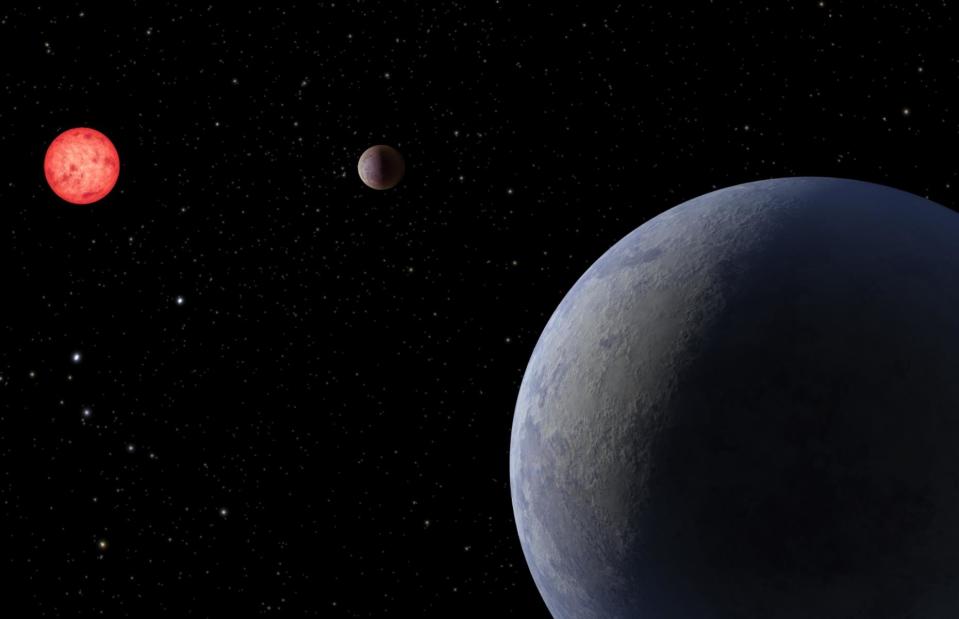
NASA/JPL Caltech
It might not be a discovery on Earth, but a recent piece of research points to the existence of a previously unknown 'super-Earth' planet. Super-Earths are essentially rocky planets at least twice the size of our own, some of which lie within habitable zones of their suns.
The discovered planet, TOI-1075 b, isn’t habitable as its temperature is an estimated 1,050°C (1,922°F) and its surface might be molten lava. But at 10 times the size of Earth, it’s among the largest super-Earths ever discovered, and could tell scientists important information about how planets like ours are formed.
The evolution of tree roots may have driven mass extinctions
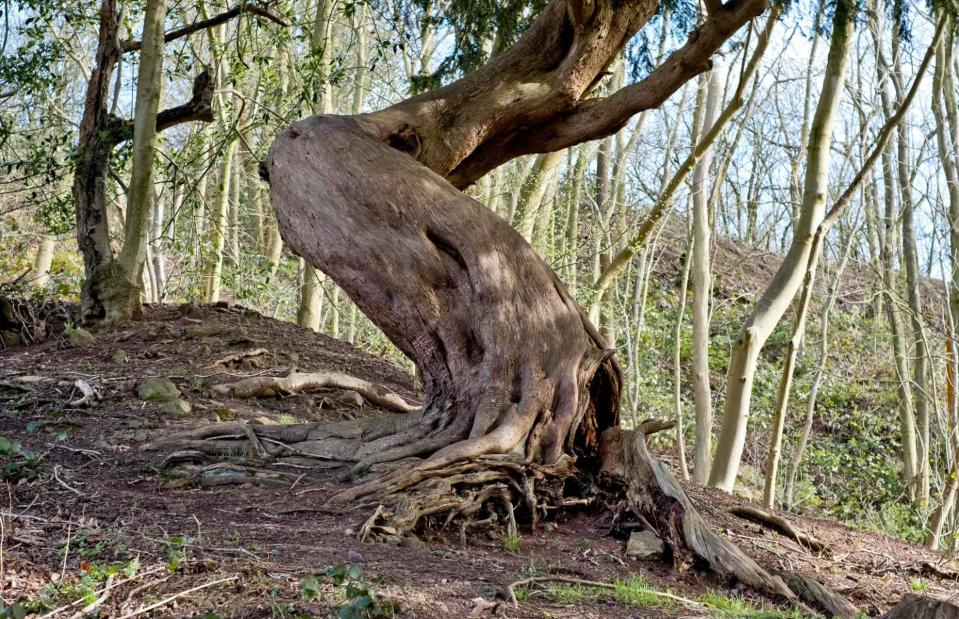
snapvision/Shutterstock
During the Devonian period over 300 million years ago, around 70% of all life on Earth died out. Now a piece of recent research has suggested that the evolution of tree roots may have triggered a series of extinction events that occurred during that time.
According to the study’s authors, tree roots are thought to have filled oceans with excess nutrients. This caused the rapid formation of destructive algae blooms, which in turn depleted oxygen levels in the water and led to mass extinctions.
We uncovered why Egyptians mummified their corpses

Fadel Dawod/Getty Images
Most people are familiar with mummification – the process by which ancient Egyptians treated and wrapped their dead. But, until recently, the reasoning behind it was misunderstood.
The prevailing theory since Victorian times was that the technique was simply for preserving the human form. It has since been argued that the process was actually used to transform corpses into a shape the gods would accept, in order to steer the deceased towards divinity. The research was showcased at Manchester Museum, England in an exhibition called Golden Mummies of Egypt.
This meteorite may reveal where the Earth's water comes from
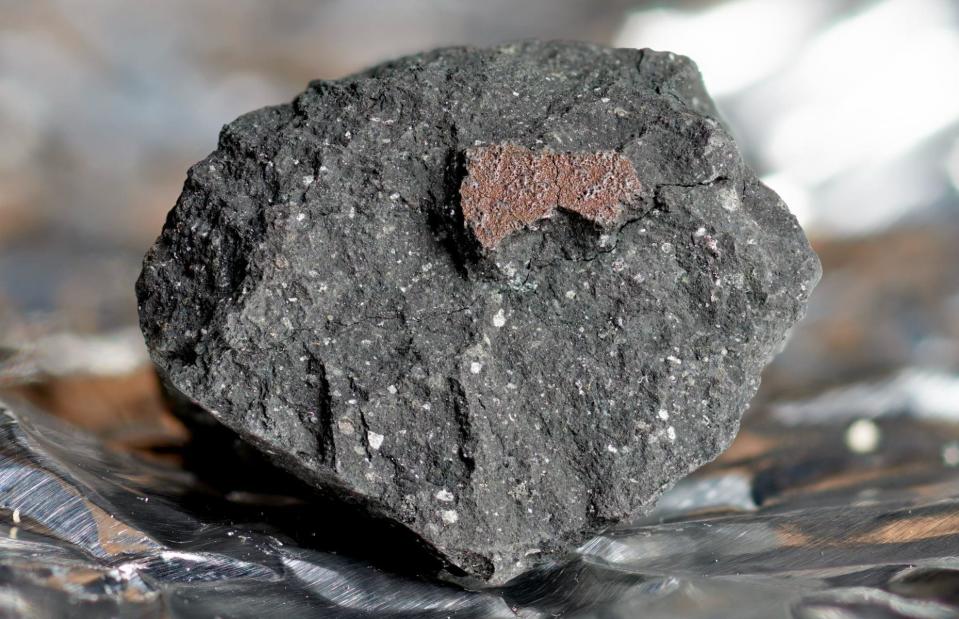
© The Trustees of The Natural History Museum, London
Some 71% of the Earth's surface is covered by water, but just where did it come from? That question may have been answered by an unlikely source: this meteorite, which was discovered in a family's front garden in Winchcombe, England in 2021. A study, published in the journal Science Advances, revealed that the meteorite contained water similar to that found on Earth, which suggests rocks from space may have brought water and other components onto our planet billions of years ago.
This mural was rediscovered in Peru
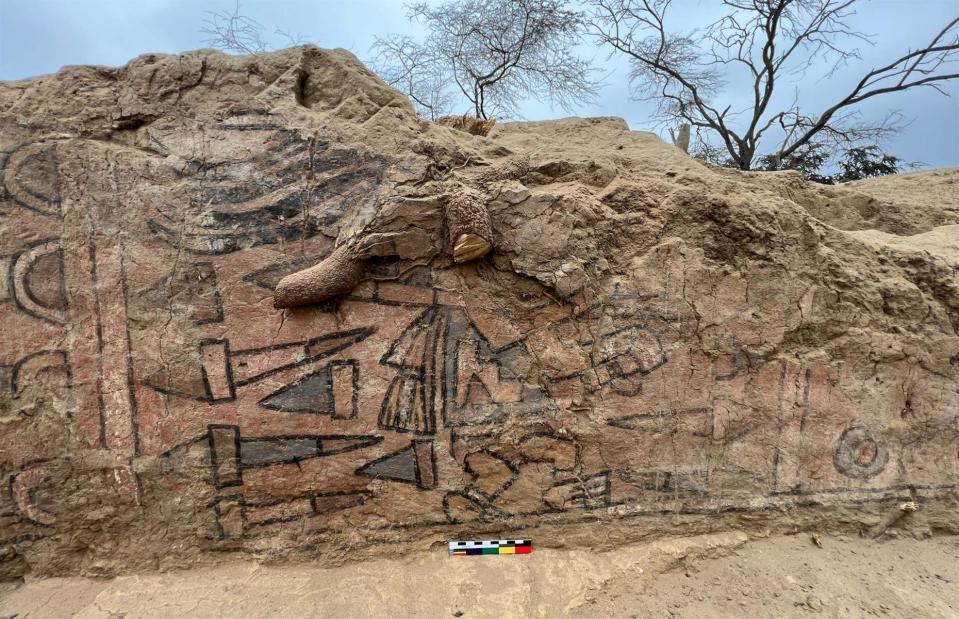
Sam Ghavami
Huaca Pintada – a magnificent 98-foot (30m) mural dated to the 9th century – was pretty impressive when it was first uncovered in northern Peru a century ago, and it's just as good the second time round. A group of grave robbers first unearthed the work in 1916, but destroyed part of the wall when they were forbidden from looting their find, causing the site to fall into obscurity.
A team of Swiss-Peruvian student archaeologists has now dug the mural back out of the dirt after a two-year battle to excavate on the privately-owned land. In doing so, they revealed vibrant images of mythical scenes. The (re)discovery was described by local academics as "the most important in recent years".
A sea dragon fossil was found in the UK
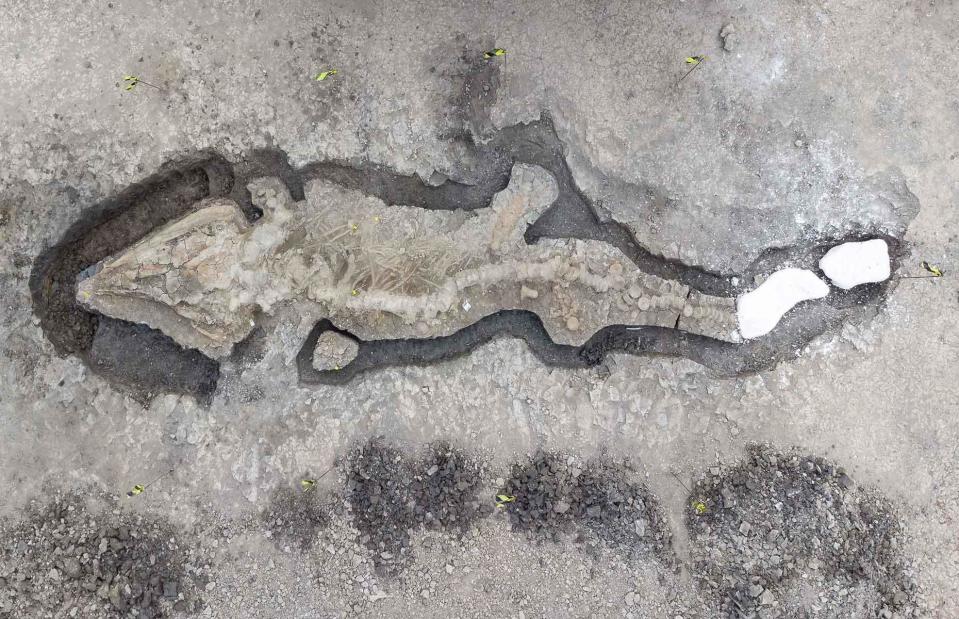
Courtesy of Anglian Water
In Rutland, England, the fossilised remains of an ichthyosaur – also known as a sea dragon – were found in February 2021. The resulting research was published in early 2022. The impressive and well-preserved skeleton was first found during a routine draining of a lagoon at Rutland Water Nature Reserve. It's the biggest and most complete skeleton of its kind ever found in the UK, and scientists also believe it's the first of its species, known as Temnodontosaurus trigonodon, to be discovered in the country.
Two sarcophagi beneath Notre-Dame were opened and identified

JULIEN DE ROSA/Getty Images
In 2019, France watched in horror as Paris' Notre-Dame Cathedral – a symbol of the city and country – sustained devastating damage from a fire that led news bulletins the world over. But during its restoration archaeologists made a remarkable discovery: two sarcophagi buried beneath the cathedral centuries before. Now the coffins have been opened and their occupants identified: an elite 17th-century clergyman and a young horseman nicknamed 'Le Cavalier'.
Now check out the most incredible ancient discoveries made recently


